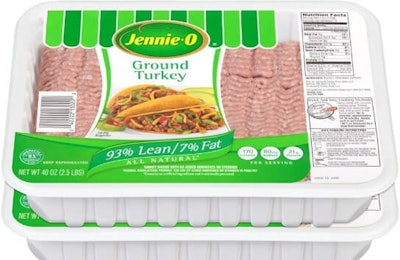
Financial impacts to supply chain challenges of 2020 will likely still be felt by Jennie-O Turkey Store in 2021, the chief financial officer of parent company Hormel Foods said.
Hormel Foods on November 24 reported the financial results of the 2020 fiscal year. During the fourth quarter, the Jennie-O Turkey Store segment reported a 21% decline in profit, a 6% decline in net sales and a 2% decline in volume.
When delivering those results, it was noted that the pause in production of three Jennie-O Turkey Store plants in the spring continued to impact the performance of the vertically integrated business. Due to concerns related to the COVID-19 pandemic, Jennie-O Turkey Store in April suspended operations at two plants in Willmar, Minnesota, and a third plant in Melrose, Minnesota. All three plants were back in operation by May 12, starting with limited production and gradually ramping up operations.
Jim Sheehan, executive vice president and chief financial officer of Hormel Foods, said during a quarterly earnings call that he hopes the company can return to about a 9% margin in 2021, which would be comparable to the margins of 2019.
Sheehan expects some financial challenges to continue in the 2021 fiscal year, particularly in the first half.
“One of the things we can’t understate is the impact to Jennie-O and their live production operation by the interruptions in production that they saw in (2020, and) how that backed up the birds. You’re feeding birds longer; you’re processing birds at a heavier weight that underperform, and I think that’s a big benefit as we keep the operations running at a more consistent level and don’t have these plant interruptions.”
Commodity turkey price projections
Hormel Foods anticipates lower commodity prices for turkey in 2021, Sheehan said, adding that a sustained recovery in the foodservice sector would likely benefit turkey markets.
Feed price projections
Sheehan noted that grain costs could also be higher in 2021, but the company manages grain costs through hedging programs. It is also considering adjusting feed formulas, “so that we’re mixing the feed a little bit better to improve our feed costs.”
View our continuing coverage of the coronavirus/COVID-19 pandemic.


















